Fire barb: description, types, content and breeding
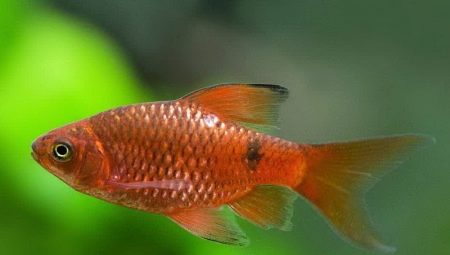
Fire barbus - spectacular aquarium fish with a bright color, which does not require special maintenance... Representatives of this breed are perfectly adapted to life in captivity. Thanks to the presence of several decorative forms, even an aquarium with only barbs will definitely not look too boring. The content of a funny neon fish will be interesting, and a veiled pet will give a lot of positive emotions to both beginners and experienced aquarists.
The fire barb needs a comfortable habitat, but it is not too sensitive to the composition of the water and does well in both large and small aquariums. Even novice aquarists who want to diversify the composition of the fish contained in the tank at the expense of the bright and nimble inhabitants of the warm rivers of Southeast Asia can have such a pet.
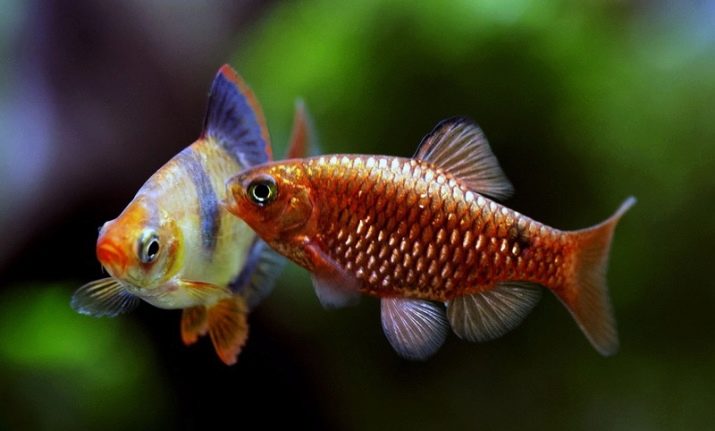
Peculiarities
The fire barb is a bright fish with a recognizable, characteristic color... This representative of the cyprinid family lives in the fresh water of rivers and lakes in Southeast Asia, New Zealand, Australia, India, and is found in Colombia, Mexico, Puerto Rico. In nature, only the classical form is found - neon and veil fire barbs are the fruit of artificial selection.
The fish has a memorable appearance. She has an oblong body, light eyes. Body color ranges from light gold, olive in females to deep red in mature males. The scales sparkling in electric light look like tongues of flame. The back of fiery barbs has a greenish tint.

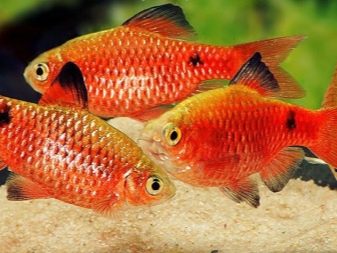
Male fish also have a red belly. The total length of their body usually does not exceed 10 cm. The fins are translucent, with a contrasting dark edging along the edges.
Fire barbs are not the most peaceful fish in the world. They can nibble on the veil and filamentous fins of other fish, but in general they are quite capable of getting along with almost any neighbors. These representatives of the carp family are classic admirers of the gregarious lifestyle. They need a company of 5-6 individuals.
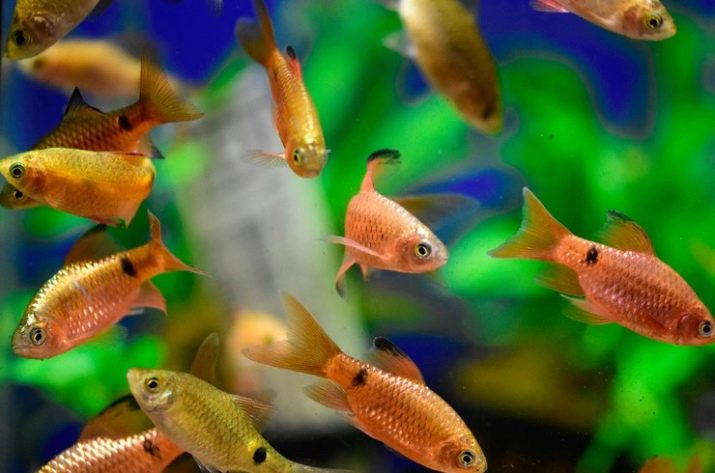
In this case, fire barbs will be mobile, active and quite cheerful.
Varieties
There are three main varieties of fire barbs, which differ in their external characteristics. They all look great in an aquarium, have minimal maintenance requirements, and are quite beautiful. But decorative individuals have additional benefits that breeders should know about in advance.
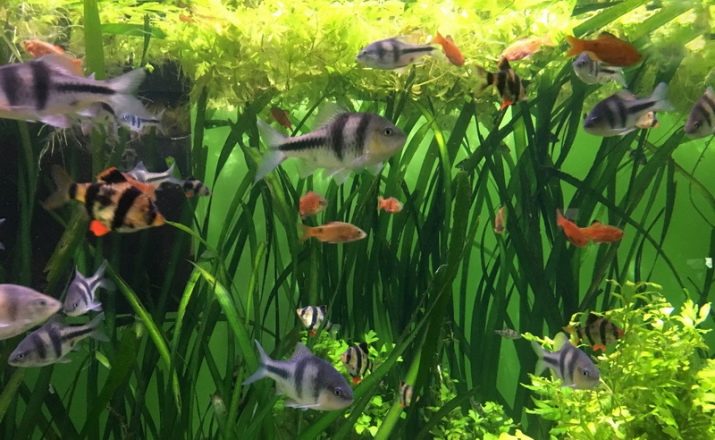
Fiery (ordinary)
Fish with a reddish-gold body color, the tail has a color from sunny yellow to scarlet. The dorsal fin follows the tone of the body, the edge is black. The pectoralis is colored bright red. The back has a golden tint with a green tint.
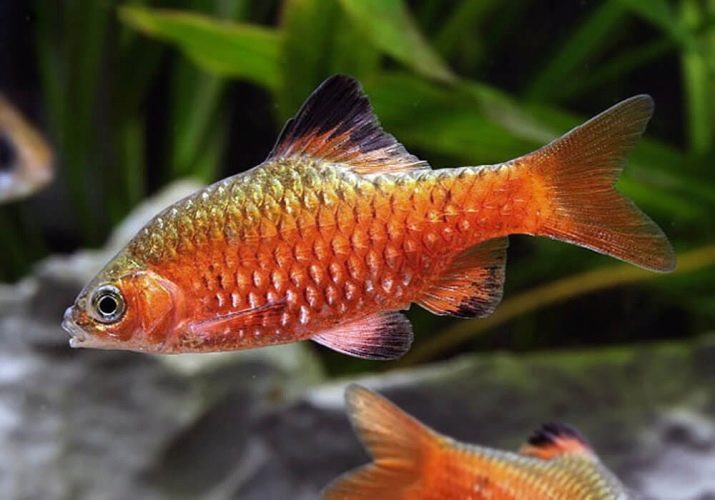
Fiery veil
A fish with elongated fins forming a long, spectacular veil. The main shade of the body is golden-red, the tail is colored paler, almost platinum, the edging is colorless. The pectoral fins follow the general color of the body, the dorsal fins are completely black. The back is almost anthracite, with a green tint.
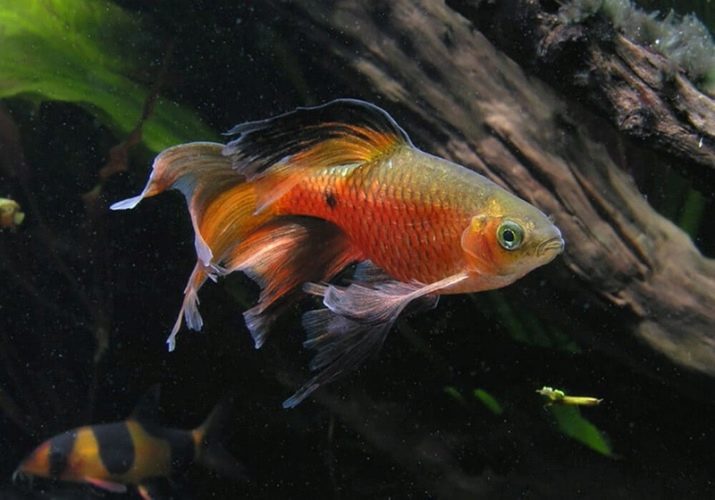
Fiery neon
The lightest variety of the fire barb has a pronounced red-gold color only in the back area. The pectoral and dorsal fins are golden, light. The body has a yellowish-gold hue, the tail is similarly painted. Fiery red blotches are found throughout the body.
In general, the neon fiery barbus can be called the lightest, rather golden yellow, with a characteristic refined tint... Veil individuals differ mainly in the color and length of the fins, their body color is almost the same as in the classic variety.

Compatibility
It is recommended to keep fire barbs in a company with the same active fish as themselves. Aquarists strongly advise against settling lalius, cockerels and similar owners of elongated fins with them. Slow swimming or viviparous fish are also not the best company for a fire barb. This category includes gastromizones, guppies, scalars, astronotuses.

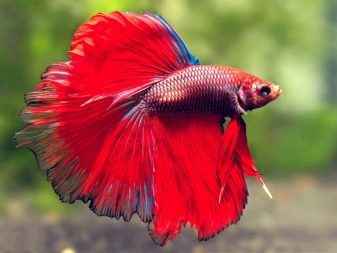
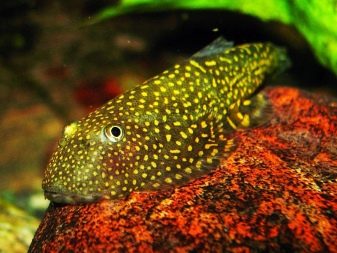
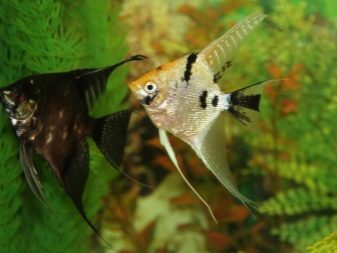
Among those who are suitable for joint content with fire barbs are thornsia, two-color labeo. You can add here fish that prefer lower water temperatures - cardinals, catfish of the panda subspecies. They coexist well with danios, battles, gourami and even swordtails. There are no restrictions on the sharing of other types of barbs - scarlet, tikto, cherry.
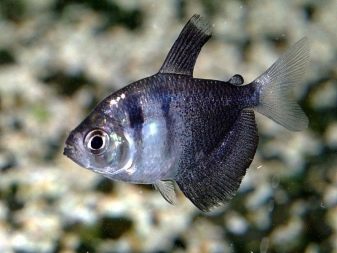
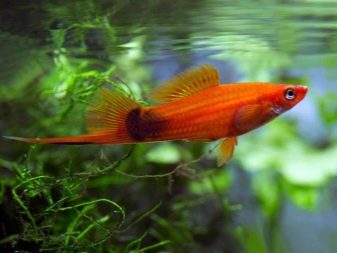
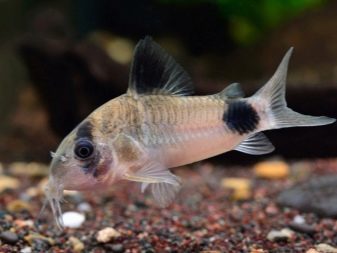
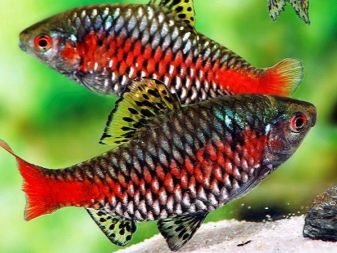
They get along well and do not conflict.
Growing conditions
Keeping fire barbs at home will not seem difficult, even for beginners in the field of aquarium hobby. Care consists in regular water changes, feeding the fish. But in order for the ecosystem of the aquarium to work properly, you first have to work a little. The main criteria for comfortable living conditions for fire barbs are as follows.
- Selection of an aquarium. A school of 6 fish will have enough capacity of 80 liters; for spawning, you will need another 15 liter tank. The fish are quite jumpy, so it's better to worry about the presence of a lid in advance. Decorations and shelters are placed inside the aquarium: caves and grottoes, driftwood, stones, plastic plants.
- Purchase of equipment. To keep fire barbs, you need a filter and an aerator, the system should be selected quite powerful to create a stream in the water. At room temperature in the room up to +20 degrees, there is no need to additionally heat the medium.Lighting devices should work no more than 12 hours; it is better to close the aquarium from direct sunlight. It is better to choose a dim backlight with a diffuse effect.
- Selection and backfilling of soil. Dark sand, gravel and small pebbles are good for keeping fire barbs. The more contrasting the background is, the brighter the color of the scales will shine. In addition, the dark soil absorbs light, minimizing discomfort for the aquarium inhabitants.
- Selection of plants. If, in addition to artificial vegetation, you want to add natural greenery to the aquarium, you should pay attention to their small-leaved species. Javanese moss, hornwort, arrowhead, kabomba are well suited for fire barbs. Plants should be placed on the sides and back of the aquarium.
- Environment creation. The optimal water temperature for fire barbs is from +16 to +24 degrees, it is better to adhere to the lower boundaries, since these fish are quite cold-loving. Acidity is needed in the range of 6-8 pH, hardness - in the range of 6-18 dGh. A change of up to 1/4 of the volume of water and a siphon flushing of the soil should be carried out weekly.

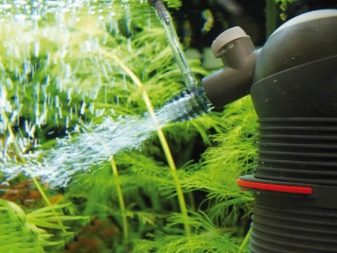
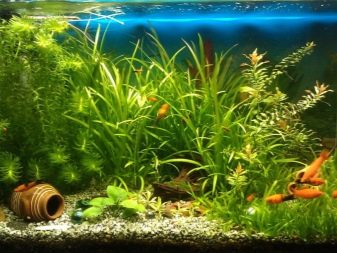
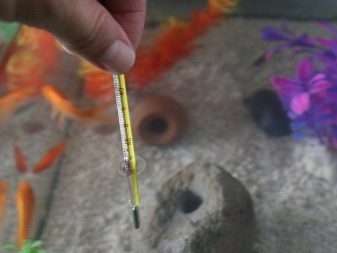
Feeding rules
Due to the fact that these fish are quite unpretentious, their food can be made as varied as possible. The presence of live food in their diet is mandatory, as well as plant components. The use of ready-made flakes, granules in combination with a tubule, bloodworm will help to achieve the desired balance. The pet can be given chopped greens as a top dressing - spinach, lettuce, Chinese cabbage.
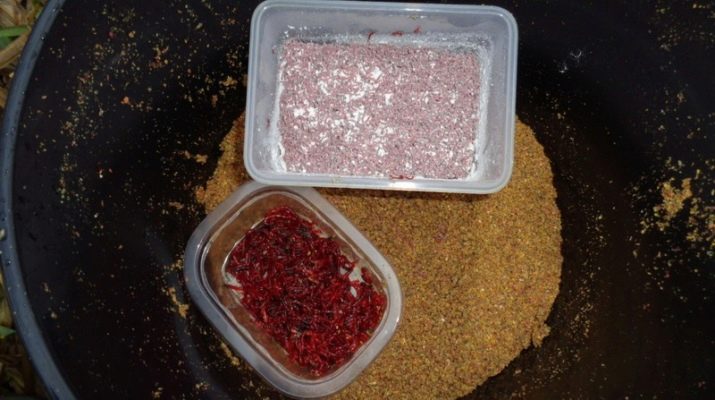
The inclusion of dried daphnia or hamarus, chopped shrimp meat or white cod fish in the menu of the fire barb helps to diversify the diet. As a vegetable "side dish", you can offer carrots or red bell peppers, chopped dried seaweed. You can pamper your fish with egg yolk, but it is better to do this before changing the water. - it heavily pollutes the water in the aquarium. A sign of insufficient amount of green food in the diet is the interest of fire barbs in the surrounding vegetation.
The optimal feeding regimen is up to 3-4 times a day in small portions. The fish should eat the food given out in no more than 2 minutes. Specialized barb food will help keep your fish colors at an optimal brightness level.

It is better to feed the fish with plant food once a week, you can offer them zucchini, cucumbers, pumpkin.
Barbus fry need high-calorie and easily digestible food. The starting feed is the ciliate, but then you can switch to a more varied diet. Its main ingredient may well be hard-boiled egg yolk. A small amount of it is kneaded, mixed with water from the aquarium. Next, the resulting suspension is given to babies.
Dehydrated egg yolks are also very nutritious and much easier to mix. You can even grind the boiled base in a blender yourself and dry it on thin parchment paper, and then add the resulting dry crumbs to the water.
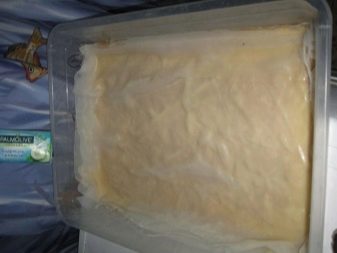
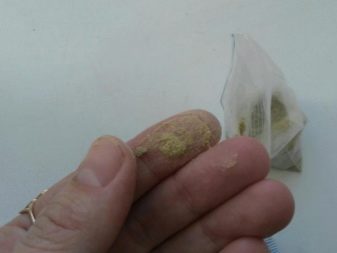
Phytoplankton-based feeds, microworms, nematodes, brine shrimp nauplii are also suitable for fry, which must be grown independently.
Sex differences and reproduction
In barbs, the differences between females and males are quite well expressed. The fairer sex is colored in olive or yellow tones. Males are colored brighter, have an expressive fiery ebb, and when excited, the fish turns red even more. In addition, they have a bright black spot in the tail area. Females tend to put on a lot of weight before spawning.
Breeding fire barbs occurs naturally in the aquarium.... It is possible to create conditions for the start of spawning by maintaining the water temperature at 18 degrees for a long time. On the eve of spawning, it is raised by 1-2 degrees, a week before that, increasing the proportion of live food. This is how the sexual activity of these fish is stimulated.
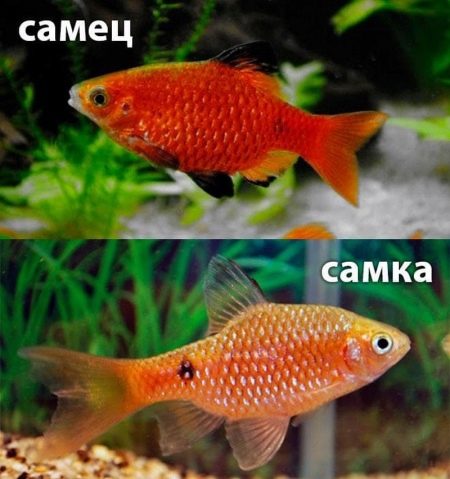
If desired, in the period before spawning, it is possible to separate the female from the males. In this case, you need to wait until its abdomen is filled with caviar, and then transplant the female and two males into a special spawning grounds. For these purposes, a small volume (10-15 l) aquarium with water poured to the level of 15 cm is suitable. A separator mesh is laid at the bottom, Javanese moss is planted. The water should have a temperature 2-3 degrees higher than that in which fire barbs are usually kept.
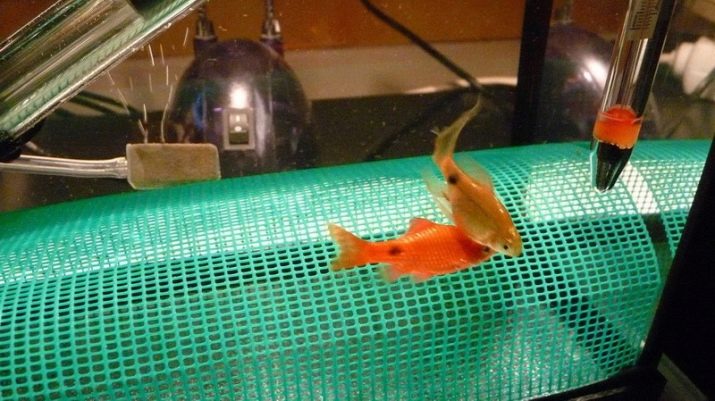
The female spawns in the morning, then the producers go to a regular aquarium, otherwise there is a high risk that the laid eggs will be eaten before they get to a safe place. The incubation process in the spawning house lasts up to 2 days, after another 2 days the fry are already floating freely in the reservoir space. Any "live dust", including ciliates, is suitable for them as a starter food.
Breeding the fire veil barbus, its common and neon varieties, does not have much difference. All fish enter puberty between 6 and 8 months. Spawning occurs up to 3-4 years, 1 or 2 times a year.
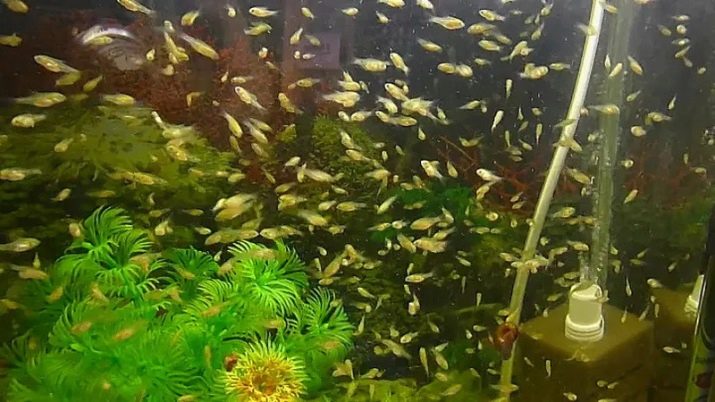
All subspecies can be crossed with each other.
Life span
The average lifespan of any breed of barbs does not exceed 5 years - this is how much the pet remains active. Experienced aquarists recommend rejuvenating the population every 3 years, as the physical activity of the fish decreases over time. The fire barb lives for 6 years, and after 4 years of life, it is almost impossible to induce spawning in it. A decrease in reproductive function is a serious problem, since offspring can only be obtained from young individuals.
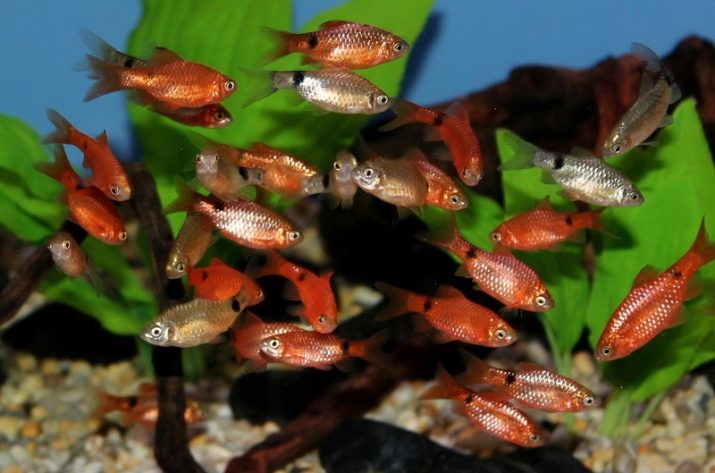
With age, barbs tend to gain excess weight, and this factor can also significantly shorten their eyelids. But the brightness of the color, on the contrary, increases towards the end of life, and the red-orange fish become a real decoration of the aquarium.
For the maintenance and care of the fire barb, see the next video.








